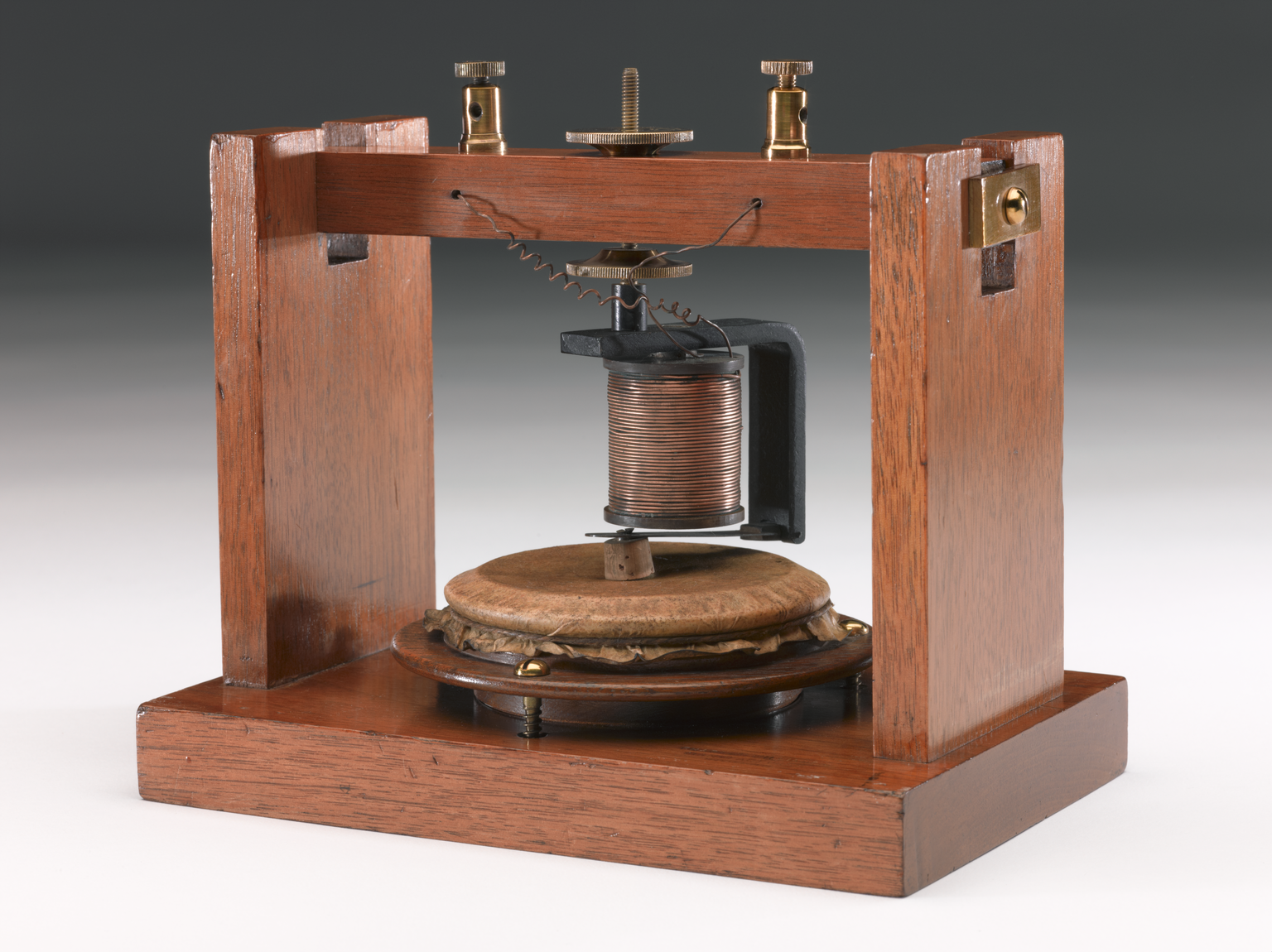
The 14 February 1876 is a very significant date in the history of the telephone. On that day both Alexander Graham Bell and Elisha Gray filed papers with the US Patent Office for a working telephone. Following a dispute Bell’s patent was granted and published on the 7th of March 1876. Recently some historians have suggested that the dispute may have been resolved so quickly because Bell found a way to incorporate some of Gray’s ideas into his patent applications – but what could have driven Bell to such deception?
Only three months earlier Bell had been forced to make a difficult decision; should he choose to marry the love of his life, or continue work on his telephone? Bell’s day job was teaching deaf people to speak, and his interest in the production of sounds had stimulated an interest in electrical science. He had been researching a ‘harmonic telegraph’ and, since June 1875, investigating the telephone after an accidental discovery that enabled him to transmit and receive sounds. The father of Mabel Hubbard, one of Bell’s students, became interested in Bell’s harmonic telegraph and offered financial support which Bell accepted while also remaining committed to his teaching. Meanwhile, Bell was becoming aware that his feelings for Mabel were turning from a teacher and pupil relationship towards those of love for her.

Bell’s decision came in November 1875 when Mabel’s father, Gardiner Hubbard, asked Bell to give up teaching and other researches and devote all his time to the telegraph. If he did so, Hubbard would provide his living expenses enabling Bell to marry. Bell was too proud to accept a handout and rejected the offer, writing:
You are Mabel’s father and I will not urge you to give – nor will I accept it if offered – any pecuniary assistance other than that we agreed upon before my affection for Mabel was known … I shall certainly not relinquish my profession until I find something more profitable (which shall be difficult) nor until I have qualified others to work in the same field.
Fortunately for Bell the Hubbard family accepted the situation and allowed Mabel to make up her own mind. Two days later she and Bell became engaged.
Although Bell had not been prepared to accept Gardiner Hubbard’s money, he took the hint and looked again at the harmonic telegraph. Alongside this work he also continued research into the telephone against Gardiner Hubbard’s wishes, for he was convinced he could make it work. His work on the telephone gained some urgency when he became aware that he had a competitor in Elisha Gray, and furthermore because he still did not have enough money to marry Mabel. Bell’s submission of his patent papers on the 14 February, the same day as Gray submitted his, shows how close the race was. If Bell did indeed make illicit additions to his papers, perhaps it is because he was driven by his desire to marry Mabel Hubbard, which he finally did in July 1877.
One comment on “Bell’s Heart On The Line”
Comments are closed.
Thank you for your interesting Post!
Yesterday, on August 2, it was the birthday of inventor Elisha Gray. Although he lost in the quarrel about the telephone patent against Bell, his scientific reputation remained undisputed and he kept on inventing and teaching as a professor. If you are interested, you can read more about the Elisha Gray in our daily ‘History of Science, Technology, and Arts’ Blog at https://yovisto.blogspot.de/2013/08/timing-is-everything-elisha-gray-and.html
Best,
Harald